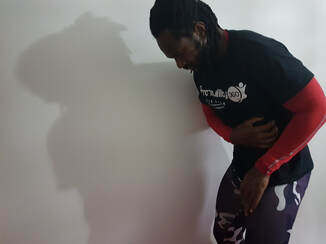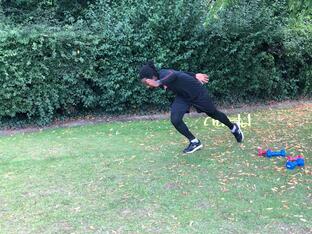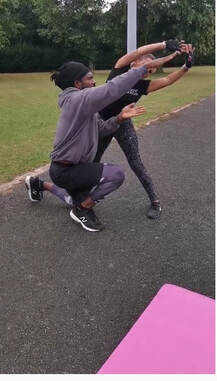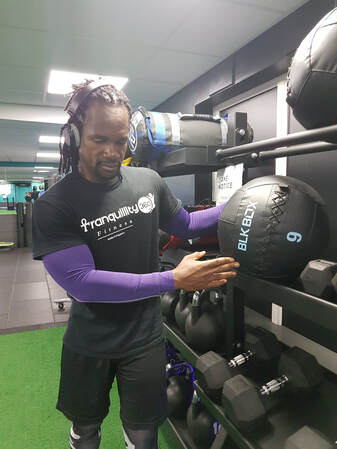 I am sure we all have this moment when powering our way through a run or even a workout and just like that bang suddenly, we are gripped with a stabbing pain that threatens to bring all that great efforts to a grinding halt. very familiar right? A stitch is a pain in the side for many of us with 45 per cent of exercisers claiming to experience it at some time. If you are one of them our guide to stitch-avoidance is a must: WHAT REALLY CAUSES A STITCH? That’s something we don’t really know, according to several top sport Drs and GPs, Stitches are harmless but can be very painful and no end of theories have arisen about causes and cures for them.” Among the suggested causes are that a stitch arises due to a lack of blood supply to the diaphragm, shallow breathing, gastrointestinal distress or strain on the ligaments around the stomach and liver. But the most popular theory is that a stitch is triggered by irritation of the parietal peritoneum, the membrane corset that wraps around your abdominal area. During exercise, your trunk muscles become tired and your back muscles over-engage to compensate, pressing on nerves felt in your abdomen, side or shoulders. EAT AND DRINK: Consuming large amounts of food or liquid within the two hours before exercise has been linked to some stitch pain. Some GPs as suggest making sure you’ve left enough time for food to be digested is essential, but often overlooked, while dehydration is thought to trigger a stitch in some people, consuming the wrong sort of fluids can also cause it. Avoid fruit juice, too. A 2012 study at Manchester Royal Infirmary found that drinking fluids before exercise was associated with side stitches and that fruit juice seemed to cause them most often, while water and sports drinks had less of a negative impact. McGrattan says some people get a stitch when consuming gels and sports drinks, so find one that suits is crucial. STRETCH AS YOU RUN: Grabbing your side in a grimace as a stitch strikes is no bad thing as it simulates a stretch that could relieve the problem. This might sound strange, but you will find some people stop to touch their toes or even run with their hands on their heads and find it helps. Stretching the affected side or bending forward can also help relieve the muscles in the back that are pushing on the nerve that’s causing the pain. THERE IS ALSO BREATHING I would suggest to Slowing down your breathing or adopting a deep and rhythmic breathing pattern has been found to relieve the pain of a stitch, if your stitch is on the right side, then try to slow your pace and exhale as your left foot hits the ground, should be able to eases the stitch .
0 Comments
 I would say 99.9% runners have made mistakes at some point during their training, before and after racing. The sad reality in most cases, we repeat the same mistakes repeatedly. Some people will learn from their mistakes (like myself) and take further steps to ensure not to be repeating the same mistakes in the future. I am going to outline for you four of the most common running mistakes and how you can avoid running injuries and other issues. 1. Running Shoes: Wearing old running shoes or wearing the wrong type of running shoes for your foot and running style can lead to running injuries. What You Should Do : Go to a running speciality store, where knowledgeable salespeople can evaluate your running style and foot type. When they determine whether you're an over-pronator, under-pronator, or neutral runner, they'll make shoe recommendations for you. Once you get the right pair of running shoes, make sure you replace them every 300-350 miles because the loss of cushioning can lead to injuries. About halfway through the life of your shoes, you might want to buy another pair to rotate into your runs. 2. Too Much Running: Many runners, especially people who are new to running, make the "terrible too's" mistake. They get so excited and enthused about their running that they do too much mileage, too fast, too soon. They start registering for lots of races, without taking any time off to rest and recover. They mistakenly think that "more is better" when it comes to running. As a result, they often start to develop common overuse running injuries, such as shin splints, runner's knee, or ITB syndrome. In some cases, they may get burned out quickly and lose interest in running. What You Should Do : Be more conservative than you think you need to be with how often, how long, and how much you run, especially early on in your development. Increase your mileage gradually. Don't let your weekly mileage increase by more than 10%.3 If you're new to running or are coming off a long break, start with walking first, and then progress into a run/walk program. 3. Hydration: Many runners underestimate how much fluid they lose during runs and don't drink enough because they're worried about side stitches. As a result, they suffer from dehydration, which can be detrimental to your performance and health. What You Should Do: Runners need to pay attention to what and how much they're drinking before, during, and after exercise. Here are some simple rules for drinking and running:
4. Nutrition : Many beginning runners underestimate the importance of nutrition, for both their running performance and their overall health. What and when you eat before, during, and after your runs have a huge effect on your performance and recovery. What You Should Do: Try to eat a light snack or meal about 1 1/2 to 2 hours before a run. Choose something high in carbohydrates and lower in fat, fiber, and protein. Some examples of good pre-workout fuel include a bagel with peanut butter, a banana, and an energy bar, or a bowl of cold cereal with a cup of milk. To avoid gastrointestinal distress, stay away from rich, high-fiber, and high-fat foods. If you're running more than 90 minutes, you need to replace some of the calories you're burning. You can get carbs on the run through sports drinks or solid foods they are easily digested, such as energy gels, bars, and even sports jellybeans designed for long-distance runners.  The six components of motor skills related to fitness are agility, balance, coordination, power, reaction time and speed. Motor skills are associated with muscle activity, motor skills are carried out when your brain, nervous system and muscles work in concert to move parts of your body in large or small manoeuvres. Brain Mackenzie-Performance Coach Motor skills are improving with practice and all six components determine your level of athletic ability. A well-rounded athlete works to improve each of the six equally. Working on gross motor skills helps anyone gain strength and confidence in his/her body. It also helps them get exercise and physical activity, which is important for a healthy lifestyle. Developing these skills can help your ability to do more complex skills in future activities, jumping over a hurdle or changing in direction while going a full speed, without injuring yourself or falling over. Ritchie Cephus-High Performance Coach Conclusion Although it can take a long time to develop fine motor skills, it can be beneficial to seriously dedicate this time for certain athletes. Among elite athletics, the differences between first and last place are often incredibly small. Since these athletes are very advanced in their ability to move the way their sport demands, fine motor development may be a key factor in giving them the edge to win. But knowing when, and how often to incorporate fine motor skill development into training is based on the coach’s knowledge to know their athletes’ abilities. If a coach doesn’t know what to look for or implement, talk with other successful coaches. Research what others have done and develop a system that works for you, working general to specific, to develop your athletes by progressing them appropriately to meet the motor demands of their sport. Tony Kauth University of Wisconsin-La Crosse Balance Balance is the ability to stabilise your body, whether standing still or maintaining motion. Ice-skating, skiing and bicycle riding are balance exercises. There are two types of balance – static and dynamic. Static balance refers to remaining upright while staying still, standing on one leg, for example. Dynamic balance deals with stability in motion. Test your balance by holding a stationary position if you can, without wobbling, after moving around, plyometrics are good example of improving your balance Coordination Coordination describes the synchronisation of your senses and your body parts in a way that enhances motor skills. A variety of tests measure coordination, including hop from one leg to another or even as simple as doing an Amarch where you need to coordinate opposite hands and legs. Agility Agility is the capacity to change course, controlling the direction and position of your body while maintaining your momentum. Changing course while sprinting e.g. leaping over hurdles. Speed Speed is the facility to move your body swiftly. Speed is usually associated with running, but speed can be any other exercises, like throwing or kicking a ball, depend on moving your arms or legs rapidly, how you would measure speed would totally depend on the type of sport you are into. Power Power is a combination of speed and muscular force. A rugby player might use power to blast through a line of men. A gymnast uses power during a performance on the rings and uneven bars. The best way to measure your power is by throwing a heavy object such as a med ball or lifting weights in the strengthened train range max power. Reaction Time Reaction time measures how swiftly you interpret and then react to expected and unexpected events happening around you. An example of reaction time to an expected event is the interim between hearing the starter's pistol and beginning to run. you can practise your reaction time by doing several things, one drill we used at tranquillity 360 fitness octagon cone drill where our coaches would call out colour of the cone and the athlete would sprint to it and back to ready position.  When we think of losing upper-body strength, we risk more than the loss of power to open a car door, taken out the garbage bin or lift a bag of groceries. "this not just a strength problem; it may also be a length problem. Shorter muscles reduce your range of motion. And if you do any reaching activities without adequate range of motion or muscle strength, like hanging curtains or putting dishes in an upper cabinet, you can get a small tear in a muscle or rotator cuff or tendinitis in the shoulder. The Strength In The Upper Body Several major muscles and muscle groups enable us to use our arms and shoulders throughout the day. · The deltoid muscle moves your entire arm at the shoulder joint and helps you wave your arm overhead. · The biceps muscle on the top of your upper arm helps bend your arm at the elbow joint, making it possible to raise a glass to drink. · The triceps muscle on the underside of your upper arm straightens your arm at the elbow joint, so you can push a window up. · The pectoralis muscles in the chest allow you to move your arms up, down, in, and out, so you can push something away from you or lift something up. · The trapezius muscle in your upper back moves your shoulder and shoulder blade, so you can shrug. · The rhomboid muscles, under the trapezius, move your shoulder blade back and forth (think of starting a lawnmower). · The latissimus dorsi muscle at the side of your mid-to-lower back pulls your arm down, so you can pull a window down. Also crucial to upper-body strength is the rotator cuff in each shoulder: the group of tendons and muscles that helps you raise and rotate your arm. Also crucial to upper-body strength is the rotator cuff in each shoulder: the group of tendons and muscles that helps you raise and rotate your arm. Why Do Our Muscles Changes? According to several scientific studies, somewhere around the age of 35, we start losing muscle mass at a rate of 1% to 2% per year. After age 60, muscle loss accelerates to 3% per year. This deterioration is called sarcopenia. Your muscle cells shrink, and you also lose some of the speed at which the motor neurons fire messages from the brain to the muscle. So, you become slower, and you lose muscle mass, bulk, and power. If you're less active when you're older — maybe because of energy or arthritis pain, you face a "use it or lose it" problem: that sedentary lifestyle and disuse of the muscles can also cause them to shrink or tighten. Simple Upper Body Exercise Program You Can Do. · Press Up : 3 sets X 12 reps X 60 seconds rest · DB Shoulder Press : 3 sets X 12 reps X 60 seconds rest · Resistance Band Upright Row : 3 sets X 12 reps X 60 seconds rest Remember doing all these exercises you will need to keep your core tight or brace. These are basic exercise, that can be progress into other exercise, to keep you in shape, if you don’t have much experience or familiar with exercise then you can seeks helps from a personal training who would be able to guide you down the right path. |
AuthorsThis blog is updated by Tranquillity 360 fitness personal trainers, as well as other guest bloggers. Archives
July 2021
Categories |

 RSS Feed
RSS Feed